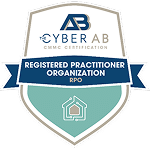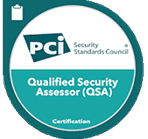The increase in remote work has significantly changed how organizations function, impacting all areas of business operations. New security and compliance challenges have arisen as employees shift from working in offices to working from home or other remote locations. Addressing these challenges is essential to protecting organizational assets and ensuring strong operational integrity.
The shift to remote work has affected and fundamentally disrupted cybersecurity and compliance. Organizations encounter unprecedented challenges as sensitive data moves across various networks and personal devices, exposing vulnerabilities and testing traditional security models. The urgency of this situation cannot be overstated.
The increase in remote work has not only accelerated the adoption of cloud services but has also notably increased the complexity of managing security and compliance. In this dynamic landscape, a flexible approach to risk management is not just crucial but a necessity. It’s an approach that can adapt to the ever-changing nature of cyber threats and the evolving use of technology, ensuring a proactive stance against potential risks and the importance of adaptability in the face of change.
This blog will delve into the six critical areas where remote work has significantly impacted enterprise security measures and compliance requirements, offering insights to the challenges and potential solutions.
1. Expanded Attack Surface:
The shift to remote work has notably broadened the attack surface, creating new entry points for cyberattacks. Employees now access corporate networks from various potentially insecure environments, including personal devices, home networks, and public Wi-Fi. This decentralization undermines the traditional perimeter-based security model designed for on-premises infrastructure. Critical impact areas include:
- Remote Access Vulnerabilities: VPNs, essential for secure connections, can be vulnerable if not correctly configured or maintained. Poorly implemented remote access solutions may expose networks to various security risks.
- Personal Devices (BYOD Risks): Employees using personal devices without standardized security controls are at heightened risk of malware and phishing attacks. IT teams face challenges ensuring these devices are updated and secure.
- Home Network Insecurities: Employees working from home may use insecure routers and Wi-Fi networks, which attackers could target to compromise the corporate network.
- Shadow IT: The increase in unsanctioned tools and software, known as shadow IT, further complicates security. Personal file-sharing services and unapproved communication platforms can bypass security policies and introduce vulnerabilities unknown to IT teams.
2. Increased Phishing and Social Engineering Threats
Remote work has significantly amplified employees’ reliance on digital communication tools such as email, Microsoft Teams, Slack, and instant messaging. While these tools enhance collaboration, they also heighten exposure to new cyber threats. Phishing attacks have surged, deceiving employees into revealing sensitive information or downloading malware via seemingly legitimate emails.
Social engineering tactics have become more sophisticated, exploiting the isolation of remote work. Cybercriminals manipulate employees into sharing confidential data by leveraging the lack of in-person verification and the urgency of virtual communication. As these threats evolve, businesses must enhance their security measures to address the unique vulnerabilities of remote work environments, emphasizing the need for vigilance and continuous improvement in security measures.
3. Challenges in Network Traffic Analysis
The rise of remote work has altered network traffic patterns, making traditional risk analysis methods less effective. With dispersed network traffic and varied employee connections, detecting potential threats has become more challenging. Adapting to such an environment necessitates advanced monitoring tools capable of managing the complexities of distributed network traffic.
4. Cloud-Based Services and Infrastructure
The surge in remote work has intensified reliance on cloud services for collaboration and data storage, introducing new risks related to data privacy, access control, and vendor management. Consequently, the increased demand has placed additional strain on cloud infrastructure, potentially leading to performance issues or outages. Organizations must scale their cloud resources to meet this growing demand and ensure reliable access to critical applications and data. This scaling process often involves increased financial costs, which can strain the already limited budgets of small to midsize businesses.
5. Increased Dependence on Zero Trust Architecture
In response to the growing prevalence of remote work, many organizations have adopted or expanded their Zero Trust Architecture (ZTA). This approach, which assumes no user or device is trustworthy without continuous verification, requires a thorough reevaluation of risk assessment strategies. However, implementing Zero Trust policies across diverse environments—such as cloud services, on-premises systems, and remote endpoints—presents significant challenges. Ensuring consistent application of security policies across these varied settings is resource-intensive and complex, necessitating meticulous configuration and ongoing management to maintain effective security controls.
6. Compliance and Regulatory Challenges
Remote work has introduced new complexities to compliance and regulatory efforts. Consequently, organizations must adapt their strategies and implement more robust controls to meet legal and industry standards. Data privacy has become increasingly difficult as employees access corporate data from various locations and personal devices. As a result, compliance with regulations such as GDPR and CCPA becomes more intricate, complicating monitoring and enforcement. Additionally, remote work can impact the execution of established business continuity and disaster recovery plans, further intensifying compliance challenges.








